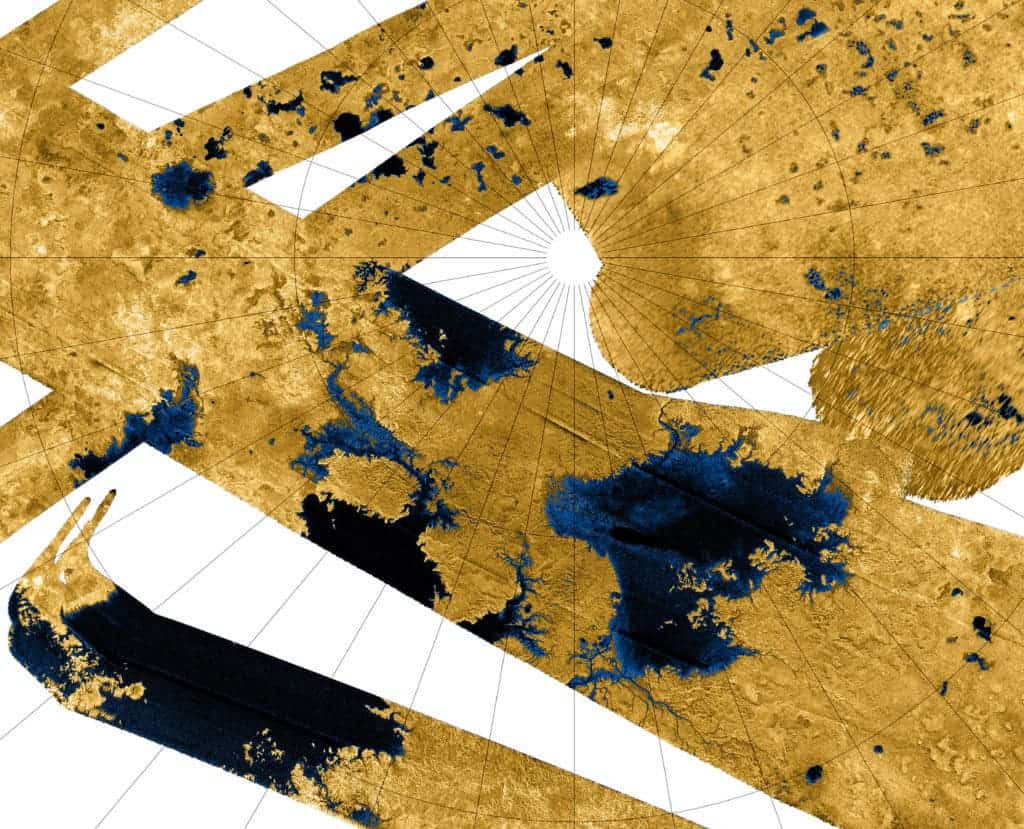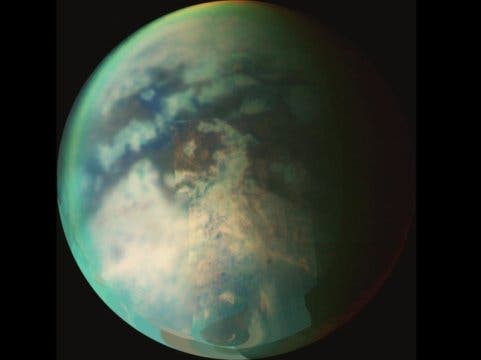Titan has seas, lakes, and rivers — and now, researchers have found, it also has rainfall and seasonal variation.

A false-color radar mosaic of Titan’s north polar region. Blue coloring depicts hydrocarbon seas, lakes and tributary networks filled with liquid ethane, methane and dissolved nitrogen. Image credits: NASA / JPL-Caltech / USGS.
If you’d picture a place that has an atmosphere and liquids on its surface, it probably wouldn’t be Titan. This frigid moon is only 50% larger than Earth’s moon and mostly consists of ice and rocky material. It features a young and smooth geological surface, with few volcanic or impact craters, and remarkably, it has not only an atmosphere, but also geological features dunes, rivers, lakes, seas, and even deltas. But there’s a key difference.
Unlike Earth’s seas, which consist of water, Titan’s seas consist of hydrocarbons such as methane and ethane.
Conversely, Titan features a nitrogen atmosphere and has a nitrogen cycle analogous to Earth’s carbon cycle, something which stunned astronomers when it was first discovered. The Cassini mission, which landed a probe on Titan in 2005, first revealed a surface which seemed to be shaped by fluids.
But Titan has far from shared all its secrets. Recently, astronomers have analyzed images suggesting that intense rainfall occurs on Titan, indicating the start of “summer” in the northern hemisphere. It’s something researchers were expecting for a long time, especially as rain had been previously observed in the southern hemisphere.
“The whole Titan community has been looking forward to seeing clouds and rains on Titan’s north pole, indicating the start of the northern summer, but despite what the climate models had predicted, we weren’t even seeing any clouds,” said Rajani Dhingra, a doctoral student in physics at the University of Idaho in Moscow, and lead author of the new. “People called it the curious case of missing clouds.”

New research provides evidence of rainfall on the north pole of Titan, the largest of Saturn’s moons, shown here. The rainfall would be the first indication of the start of a summer season in the moon’s northern hemisphere, according to the researchers. Credit: NASA/JPL/University of Arizona.
The image was taken in 2016, by the near-infrared instrument on the Cassini probe, which offered the bulk of what we know about Titan. The instrument spotted a reflective feature covering approximately 46,332 square miles, which did not seem to appear on any other images of Cassini. The analyses suggest that this reflective feature represents a wet surface.
“It’s like looking at a sunlit wet sidewalk,” Dhingra said.
So we have a strong confirmation that seasons are happening on Titan, which confirms the predictions astronomers made. However, this poses a new question that researchers will have to answer.
“We want our model predictions to match our observations.” Dhingra said. “Summer is happening. It was delayed, but it’s happening. We will have to figure out what caused the delay, though.”
The study was published in Geophysical Research Letters.









